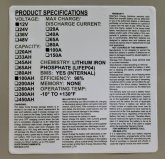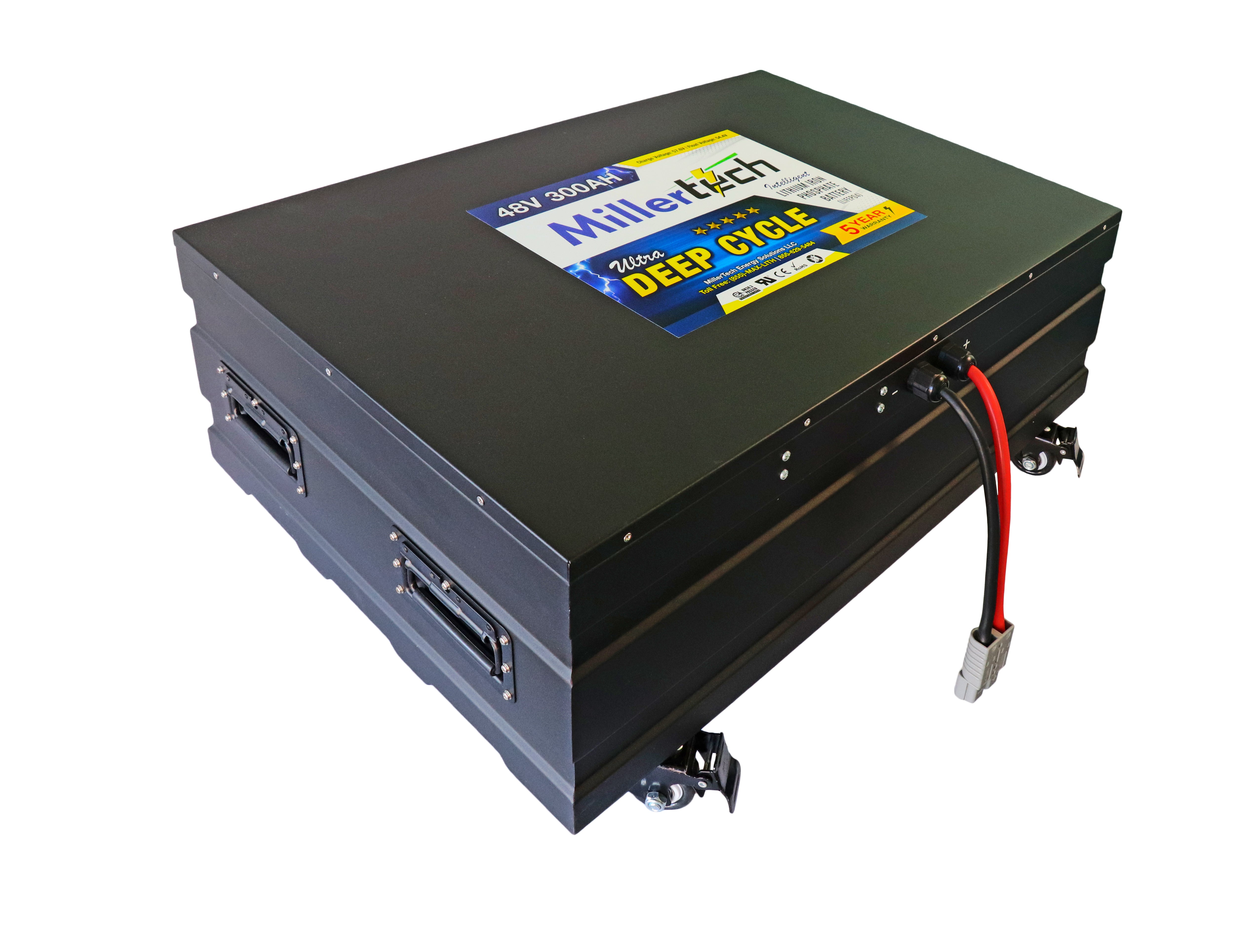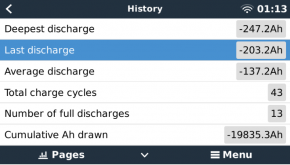I'm not affiliated with LSDreliance (Jason) / MillerTech in any way. I'm just a happy customer!
I've bought MillerTech batteries from Jason multiple times and it was a smooth process each time. Jason is highly technical and can answer any technical question about the batteries, and if he doesn't know, he'll ask MillerTech directly and circle back with you. MillerTech themselves are customer-centric and will go above and beyond to make sure you are 100% happy.
My setup is
4x 12.8 (12V), 100Ah LifePO4 batteries ("premium batteries" as they're calling now), wired in 2S2P for 25.6V (24V), 200Ah for a total of
5.1 kWh:


The batteries themselves are of high quality, and the capacity holds up as advertised. When I first installed the batteries, I performed a full 100%-0% capacity test at 1570W (61A so 0.31C, with 1C being 200A). The result was
219 Ah at 25.6V nominal, so that's more than the 200 Ah advertised.


Just yesterday, I performed another 0.31C capacity test from 100% to 5%, and got
207.7 Ah. Extrapolating the data, that's 207.7 Ah / 95% = 218 Ah, so still over the 200Ah advertised.
Over the last 6 months, the battery system has been drawn roughly 10,680 Ah, or 280 kWh, plus another 280 kWh put back into it via daily solar charging, for a total of 560 kWh. So you can say that they've been cycled roughly 560 kWh/10.2 kWh =
55 times. (or equivalently 280 kWh / 5.1 kWh = 55 times if you only count the energy discharged). According to my battery monitor, it has 74 Synchronization counts, meaning charged to 100% 74 times. Typically, my daily solar yield is enough to charge the battery to 100% daily, but there are certain days where I use more than the solar yield. So I'd say 75%+ of the time, it's charged to 100%.
If I can say one negative thing about the batteries, it's about the inaccurate SoC % meter on them. The voltage reading is accurate, but I personally can't trust the SoC % displayed on it. Under heavy load, the SoC % displayed is lower than the actual SoC, and under low/no load, the SoC % displayed is higher than the actual SoC. It's not a huge deal for me as I use an external battery monitor to accurately count Ah/Wh going in/out of the batteries, but just something to think about if you solely rely on that meter.
Yes, these batteries more expensive that your typical $400-600 / 100Ah you get from China, but the cells on these packs are top notch! If you want to pay a bit less and don't mind lower quality cells, looks like MillerTech is now selling grade-B packs for a slightly lower price. However, I can't say anything about those since I haven't personally tested them, but the regular premium ones (gray case) is recommended by me. If anyone is interested in all the technical data, let me know and I can post it somewhere. I'll try to post more updates as the batteries are cycled and age in the coming years.

 ldsreliance.myshopify.com
ldsreliance.myshopify.com









